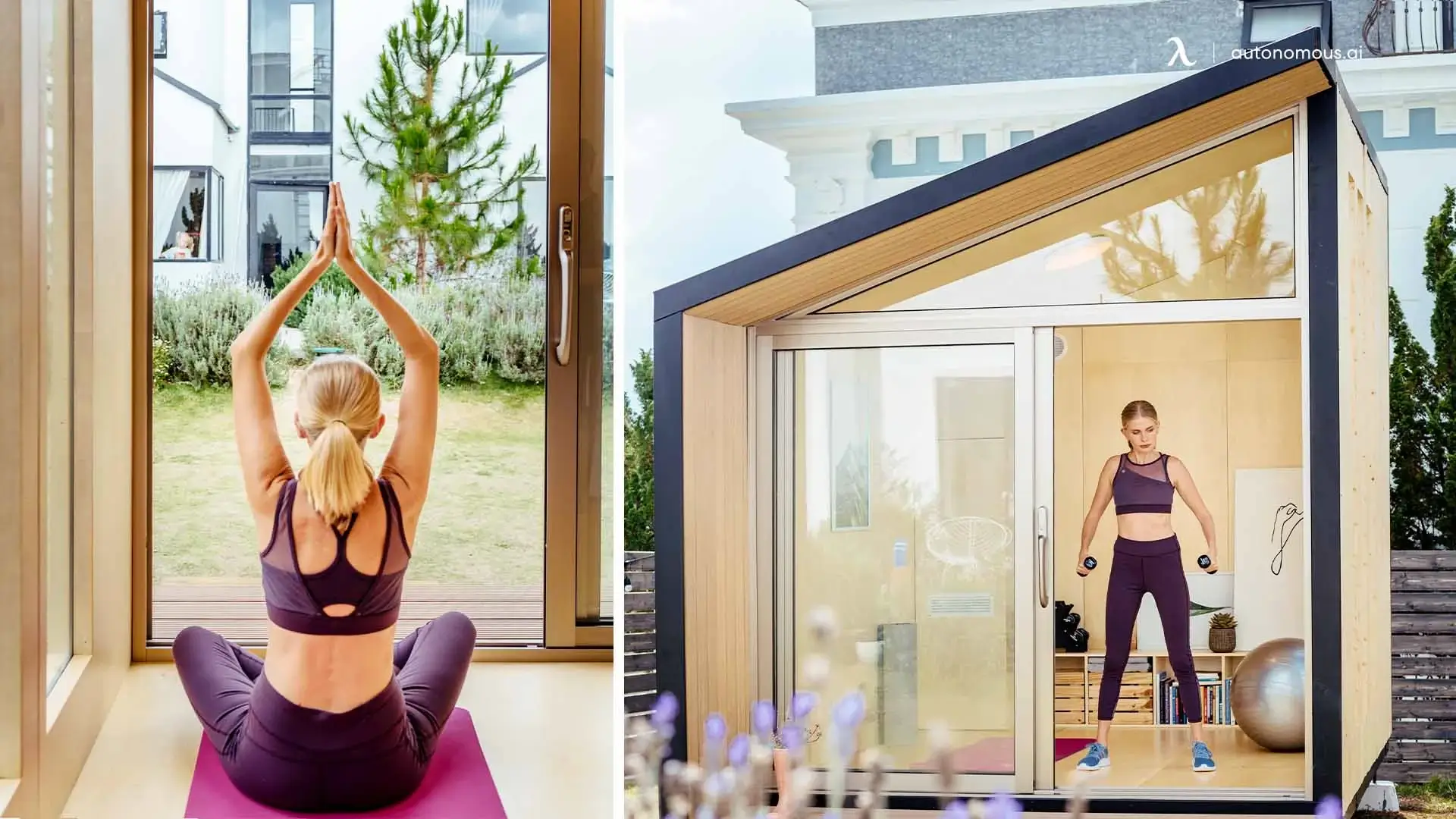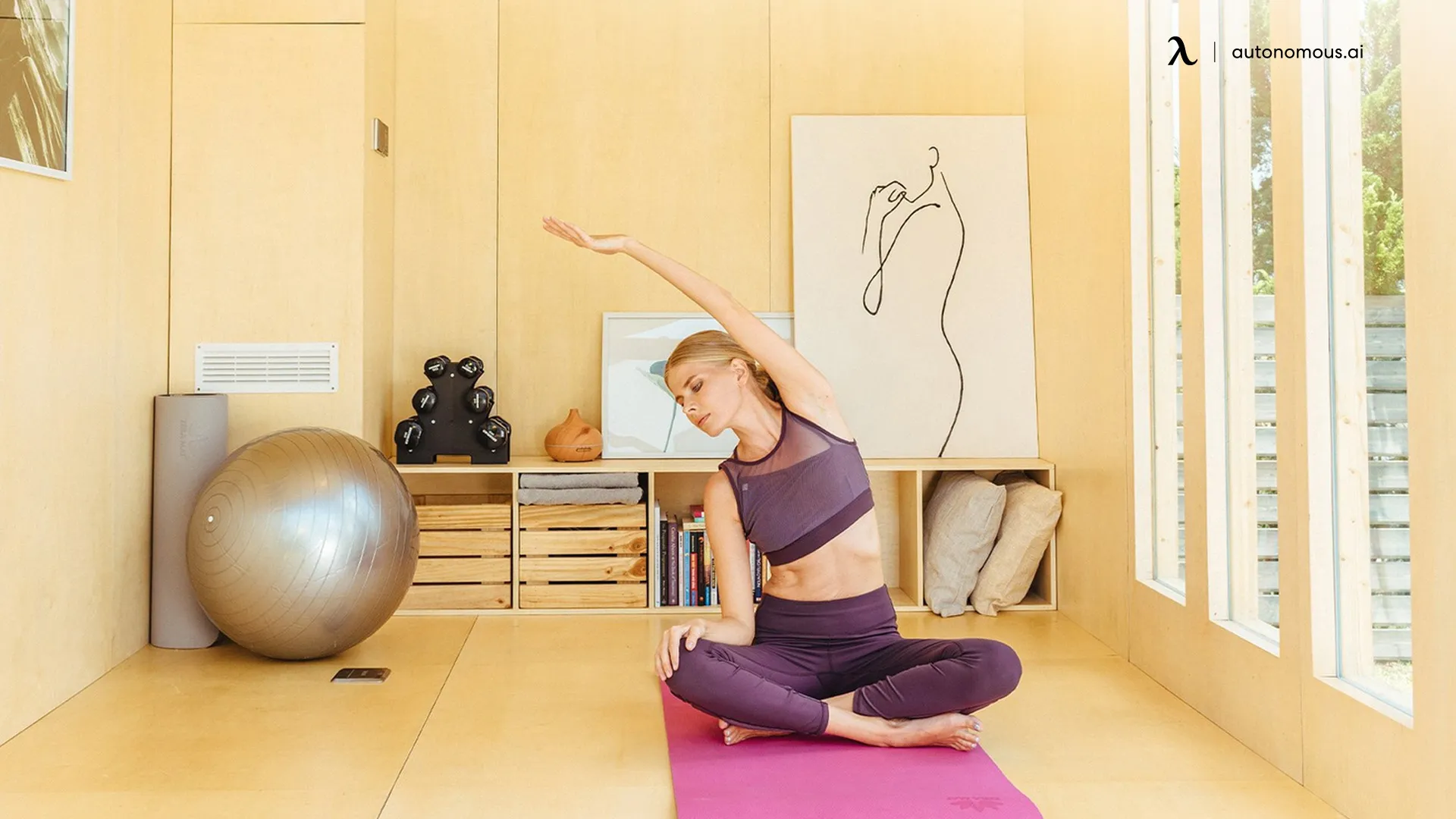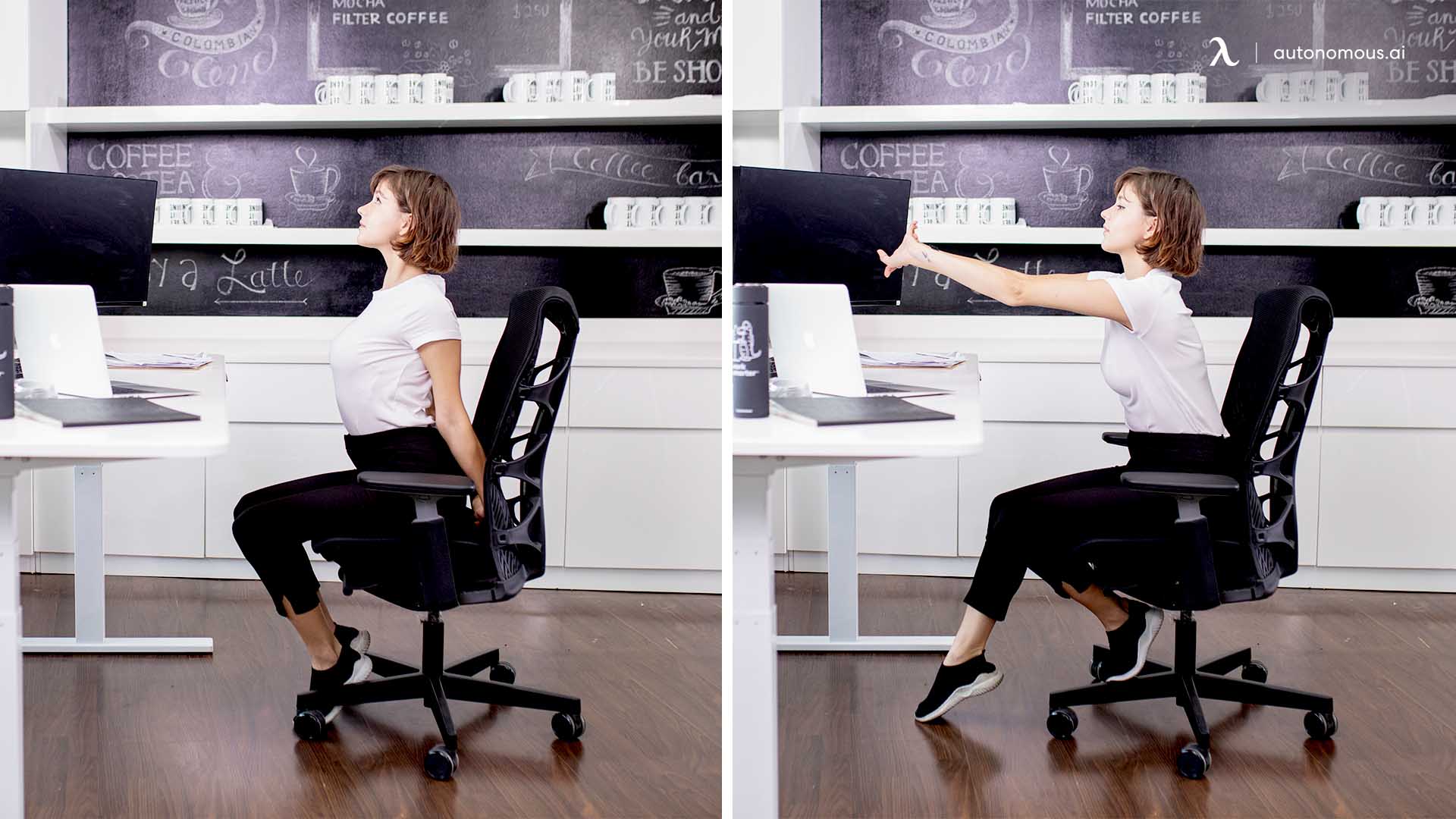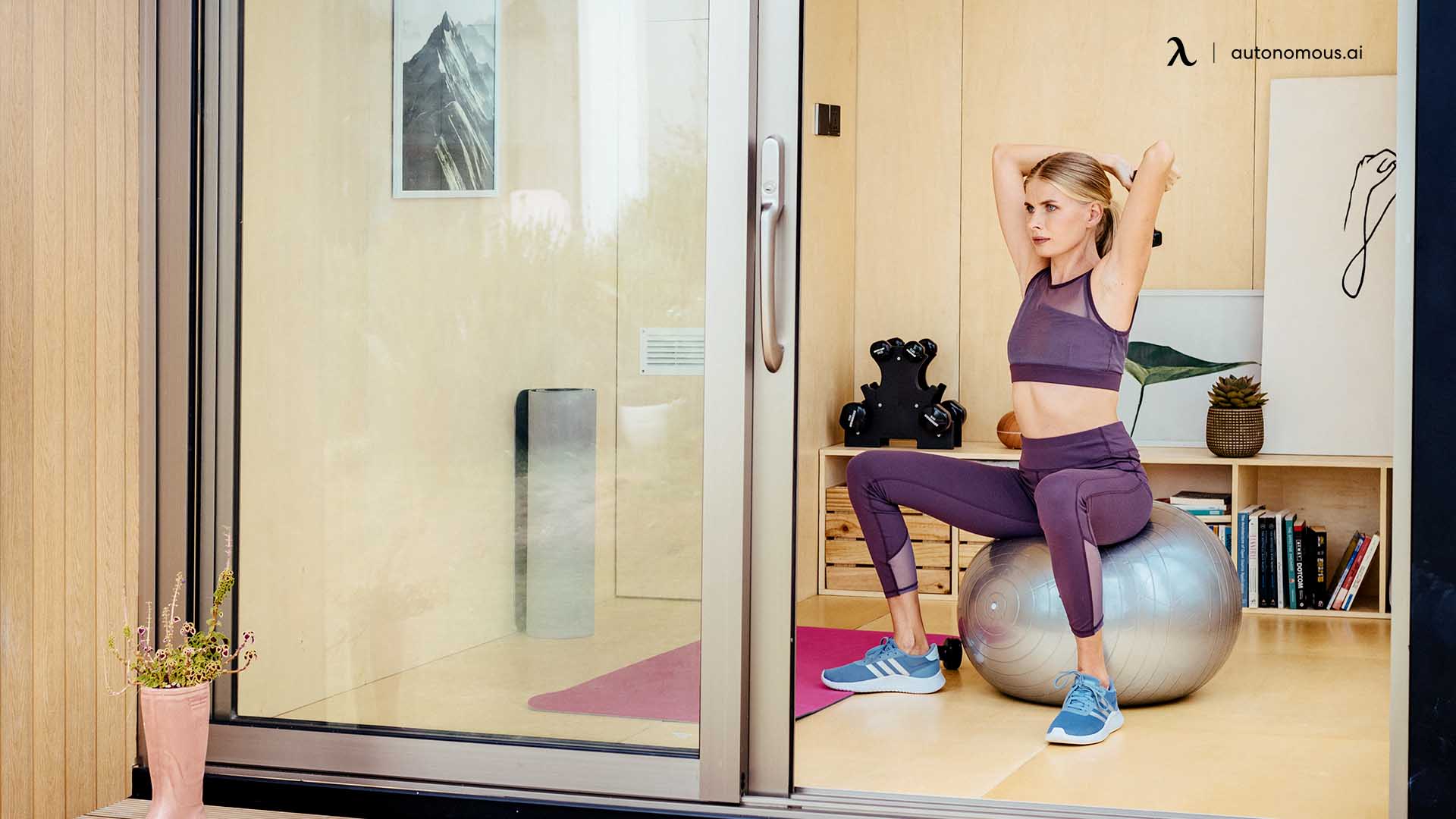
Table of Contents
Back pain affects millions worldwide, often limiting daily activities. Yoga can be a powerful tool to relieve back pain by improving flexibility, strengthening muscles, and promoting proper alignment. In this article, we'll explore back pain yoga poses and yoga stretches for back pain that target specific areas like the lower back, upper back, and mid back, offering relief for both beginners and seasoned practitioners alike.
Why Yoga for Back Pain?
Yoga is known for its ability to improve physical and mental well-being, and it’s especially beneficial for back pain. Regular practice helps relieve back pain by stretching tight muscles, strengthening weak ones, and improving posture. Here’s why yoga works:
- Improves Flexibility:
Yoga stretches lengthen muscles and increase joint mobility, relieving stiffness and tension in the back, especially in the lower back and mid back. If you're struggling with stiffness, it's helpful to also explore lower back pain and bruising without injury for further insights on muscle recovery.
- Strengthens Muscles:
Poses like Bridge Pose and Cobra Pose strengthen the muscles supporting the spine, offering better structural support and reducing the risk of future back pain. You can enhance your overall strength with the single best exercise for lower back pain, which targets key muscles around the spine.
- Enhances Posture:
Many back pain yoga poses target the spine, encouraging proper alignment. Over time, this can improve posture and prevent strain that often causes discomfort. To further support your posture, understanding the sitting position for lower back pain is essential.
- Stress Relief:
Yoga promotes relaxation through breathing exercises and mindfulness, which can reduce stress-related back pain, especially in the upper back.
- Gentle and Safe for Beginners:
Back pain yoga for beginners is designed to be gentle, with low-impact poses that won’t exacerbate existing pain, making it an ideal choice for people new to exercise.

Yoga Poses for Lower Back Pain Relief
Lower back pain is one of the most common types of discomfort, affecting millions of people daily. It can result from poor posture, muscle strain, or a sedentary lifestyle. Fortunately, certain lower back pain yoga poses can help relieve discomfort by stretching muscles, improving flexibility, and strengthening the muscles around the spine.
If you're looking for additional support at home, check out the best chair for lower back and hip pain at home. Additionally, the best living room chair for lower back and hip pain can provide extra comfort while sitting for long periods.
Here are some of the best yoga positions for back pain that target the lower back:
1. Child's Pose (Balasana)
Begin on your hands and knees, then slowly sit your hips back toward your heels, extending your arms forward on the mat. Rest your forehead on the floor and breathe deeply.
This gentle stretch elongates the spine and helps release tension in the lower back, hips, and thighs. It’s an excellent pose for beginners and a great way to relax the back after a long day of sitting.
2. Cat-Cow Pose (Chakravakasana)
Start on your hands and knees in a tabletop position. Inhale as you arch your back (Cow Pose), lifting your chest and tailbone. Exhale as you round your spine, tucking your chin to your chest (Cat Pose). Repeat the movement slowly, syncing your breath with the motion.
This dynamic movement massages and stretches the spine, increasing flexibility in the lower back and relieving tension along the back muscles.
3. Cobra Pose (Bhujangasana)
Lie on your stomach with your hands placed beneath your shoulders. Slowly lift your chest off the ground, arching your back and pressing your pelvis into the floor. Keep your elbows slightly bent and engage your back muscles.
Cobra Pose gently strengthens the lower back muscles while stretching the chest and abdominal muscles. It’s an excellent pose for relieving stiffness and promoting better spinal alignment.
4. Bridge Pose (Setu Bandhasana)
Lie on your back with your knees bent and feet flat on the floor. Press your feet into the mat and slowly lift your hips, forming a straight line from your shoulders to your knees. Hold the position for a few breaths before slowly lowering your hips back down.
This pose strengthens the lower back, glutes, and core muscles, providing support for the spine and relieving lower back pain by improving muscle tone.
5. Sphinx Pose (Salamba Bhujangasana)
Lie on your stomach, placing your forearms on the floor in front of you. Gently lift your chest and upper body off the ground, keeping your elbows close to your sides. Ensure your pelvis stays grounded.
Sphinx Pose is a gentler backbend than Cobra and helps stretch the lower back while strengthening the muscles along the spine. It’s a great way to reduce lower back tension without overstraining.
Yoga Poses for Upper Back Pain Relief
Upper back pain is often caused by poor posture, muscle tension, or stress. It can lead to discomfort in the shoulders, neck, and upper spine. Luckily, there are several upper back pain yoga poses designed to release tightness, improve mobility, and strengthen the muscles around the upper back.
Here are some effective yoga positions for back pain that specifically target the upper back:
1. Downward-Facing Dog (Adho Mukha Svanasana)
Start on your hands and knees in a tabletop position. Tuck your toes and lift your hips toward the ceiling, forming an inverted V-shape. Keep your hands shoulder-width apart and your feet hip-width apart. Relax your head between your arms, aiming to press your heels toward the floor.
This classic pose stretches the shoulders, back, and hamstrings while strengthening the upper body. It helps alleviate tension in the upper back and neck while promoting overall flexibility.
2. Reclining Spinal Twist (Supta Matsyendrasana)
Lie on your back with your knees bent and feet flat on the floor. Bring your knees toward your chest and slowly lower them to one side, keeping your shoulders on the ground. Turn your head in the opposite direction of your knees to deepen the twist.
This gentle twist stretches the spine, upper back, and shoulders. It helps release stiffness in the upper back and can be particularly beneficial for relieving tension between the shoulder blades.
3. Eagle Arms Pose (Garudasana Arms)
Sit or stand with your back straight. Extend your arms in front of you, then cross your right arm under your left. Bring the palms together or keep the backs of your hands touching. Lift your elbows toward the ceiling while gently pulling your hands away from your face.
This pose helps stretch the shoulders, upper back, and neck. It’s excellent for releasing tightness in the upper back and improving mobility in the shoulders.
4. Thread the Needle Pose (Urdhva Mukha Pasasana)
Start in a tabletop position on your hands and knees. Slide your right arm underneath your left arm, bringing your right shoulder and temple to the floor. Reach your left arm overhead and gaze toward the ceiling.
Thread the Needle Pose targets the upper back, shoulders, and neck, offering a deep stretch and releasing any tightness or stiffness in the upper back and shoulders.
5. Cobra Pose (Bhujangasana) (Also beneficial for upper back)
Lie on your stomach with your hands beneath your shoulders. Press into the floor as you lift your chest and head, arching your back. Keep your elbows close to your body and engage your core.
While Cobra is also great for lower back pain, it effectively stretches the chest and strengthens the upper back. It can relieve tension in the upper back and shoulders.
For more information on upper back pain causes, you can explore common issues and treatments in upper back pain causes and treatments. Additionally, you may find ergonomic chairs helpful for support, including the best office chair for upper back pain.
Lower Back Pain Yoga Poses to Avoid
Not all yoga poses are suitable when you're dealing with lower back pain. Some can put extra strain on your back, especially if performed incorrectly. Here are some lower back pain yoga poses to avoid to keep your practice safe and effective:
- Forward Fold (Uttanasana)
- Plow Pose (Halasana)
- Wheel Pose (Urdhva Dhanurasana)
- High Lunge (Crescent Lunge) with Deep Backbend
- Camel Pose (Ustrasana)
Important Note: Always listen to your body and avoid pushing yourself too hard in yoga poses. If you experience pain during any pose, stop and consult a professional if necessary.
How Office Workers Use Yoga to Relieve Back Pain
As someone working in an office setting, I know how much back pain can interfere with productivity. Long hours sitting at a desk can lead to tightness in the upper back, lower back, and shoulders. I started incorporating yoga into my daily routine, and it has made a huge difference in relieving back pain and improving my posture. Here’s what I do:
Morning Routine (Before Work)
Cat-Cow Pose (Chakravakasana) – I start my morning with this to gently wake up my spine and relieve any stiffness from sleeping. It’s a great way to get my back moving and energized for the day.
Child’s Pose (Balasana) – A few minutes of Child’s Pose to stretch my lower back, hips, and thighs, which can get tight after sleeping.
Mid-Day Break (During Work)
Seated Spinal Twist (Ardha Matsyendrasana) – Every couple of hours, I take a break from my desk and do a seated spinal twist. It helps alleviate any tension that builds up in the upper back and shoulders from sitting too long. Tips on the best computer chair for back pain can also make a significant difference in managing discomfort during long hours at the desk.
Standing Forward Fold (Uttanasana) – When I feel tight in my hamstrings and lower back, I do a quick Standing Forward Fold to release the tension. I make sure to bend my knees slightly to protect my back.
Evening Wind-Down (After Work)
Bridge Pose (Setu Bandhasana) – To counteract the hours of sitting, I like to do Bridge Pose to engage my glutes and strengthen my lower back. It’s a great way to relax my back after a long day.
Sphinx Pose (Salamba Bhujangasana) – I finish my evening routine with Sphinx Pose to gently stretch my lower back and open my chest. It’s perfect for relieving the stress that accumulates during the day.
Since incorporating these yoga poses for back pain into my routine, I’ve noticed a significant reduction in discomfort. Not only does yoga help with back pain, but it also increases my overall energy and focus during the workday. It’s been a game-changer for my productivity.
Tip: If you work long hours, take small breaks throughout the day to stretch and move. Even just five minutes of yoga can make a big difference in how you feel. For added comfort, using an ergonomic office chair can support your posture, while a chair cushion for back pain might further relieve discomfort during long sitting sessions.
You may also want to look into office chair exercises and standing desk exercises to incorporate movement throughout the day. If you're looking to upgrade your workspace, a height-adjustable standing desk could provide flexibility and encourage better posture.

FAQs
Yoga vs Pilates for Back Pain: What’s the Difference?
Both yoga and Pilates can be effective for back pain, but they offer different approaches. Yoga focuses on flexibility, breathing, and stretching to relieve tension and strengthen muscles, particularly the spine. Pilates, on the other hand, emphasizes core strengthening, which can also support the spine but is more focused on controlled movement and stability. For back pain, yoga is often recommended for its holistic approach, while Pilates may be beneficial for improving posture and building core strength.
Can Yoga Help with Back Pain?
Yes! Yoga is known for its ability to relieve back pain by improving flexibility, strengthening muscles, and promoting better posture. Certain yoga poses for back pain focus on stretching tight muscles and strengthening those that support the spine, which can alleviate discomfort and prevent further injury.
Is Yoga Good for Back Pain?
Absolutely! Yoga is an excellent way to manage and relieve back pain. By targeting key areas such as the lower back, upper back, and shoulders, yoga helps stretch and strengthen muscles, reduce tension, and improve spinal alignment. Regular yoga practice can be a long-term solution for managing chronic back pain.
Is Yoga or Pilates Better for Back Pain?
Both have their benefits, but the choice depends on your needs. Yoga tends to focus more on flexibility and relaxation, making it ideal for people looking to stretch and reduce tension in the back. Pilates is excellent for strengthening the core and improving posture, which can also relieve back pain. If you’re looking for overall pain relief and relaxation, yoga might be a better option; however, combining both could provide the best results for long-term back health.
What Are the Best Yoga Poses for Back Pain?
Some of the best yoga poses for back pain include:
- Child’s Pose (Balasana) for a gentle stretch of the lower back.
- Cat-Cow Pose (Chakravakasana) to increase flexibility and relieve tension.
- Cobra Pose (Bhujangasana) to strengthen the lower back muscles.
- Bridge Pose (Setu Bandhasana) to engage and strengthen the back and core muscles.
- Sphinx Pose (Salamba Bhujangasana) for a gentle backbend that stretches the spine.
What Yoga Poses to Avoid with Back Pain?
Some poses can put undue stress on the back, especially if not performed correctly. Poses to avoid include:
- Forward Fold (Uttanasana): Can strain the lower back if you have tight hamstrings.
- Plow Pose (Halasana): Can overstretch and put pressure on the spine.
- Wheel Pose (Urdhva Dhanurasana): May cause excessive back bending and strain.
- Camel Pose (Ustrasana): Deep backbends can worsen lower back discomfort if done incorrectly.
Should I Do Yoga If My Back Hurts?
Yes, but with caution. If you have back pain, it's important to choose gentle yoga poses for back pain and avoid any poses that may cause discomfort or strain. Focus on stretching and strengthening muscles that support the spine. If you’re new to yoga or have a serious injury, consult with a healthcare professional before beginning any practice.
Can Yoga Help with Lower Back Pain Specifically?
Yes! Many lower back pain yoga poses focus specifically on relieving tension and strengthening muscles that support the lower back. Poses like Child’s Pose, Cobra Pose, and Bridge Pose target the muscles in the lower back, providing relief and improving flexibility.
How Often Should I Practice Yoga for Back Pain?
Ideally, practicing yoga at least 3-4 times per week can help maintain flexibility, strengthen muscles, and alleviate back pain. However, consistency is key—performing shorter, daily sessions can provide ongoing relief. Always listen to your body and adjust based on your comfort level.
Is Yoga Safe for Beginners with Back Pain?
Yes, yoga can be safe for beginners with back pain as long as you start with gentle, beginner-friendly poses and avoid pushing yourself too hard. Focus on foundational poses like Child’s Pose, Cat-Cow, and Sphinx Pose, and gradually build strength and flexibility over time. If you experience pain, stop and consult a professional.

Conclusion
Yoga is a powerful tool for relieving back pain by stretching, strengthening, and improving posture. Whether dealing with lower back pain, upper back pain, or mid back pain, yoga poses can offer relief and support long-term spinal health. Regular practice can reduce tension, strengthen muscles, and prevent discomfort.
Listen to your body and start with gentle back pain yoga poses. Gradually increase intensity as flexibility improves. If pain persists, consult a healthcare professional.
Yoga enhances overall well-being. For issues like middle back pain from sitting at desk, consider ergonomic solutions. Understanding middle back pain causes in females and choosing the right chair, such as the best mid back office chair or knowing the difference between mid back vs high back chair, can further improve comfort and support.
Spread the word
.svg)







